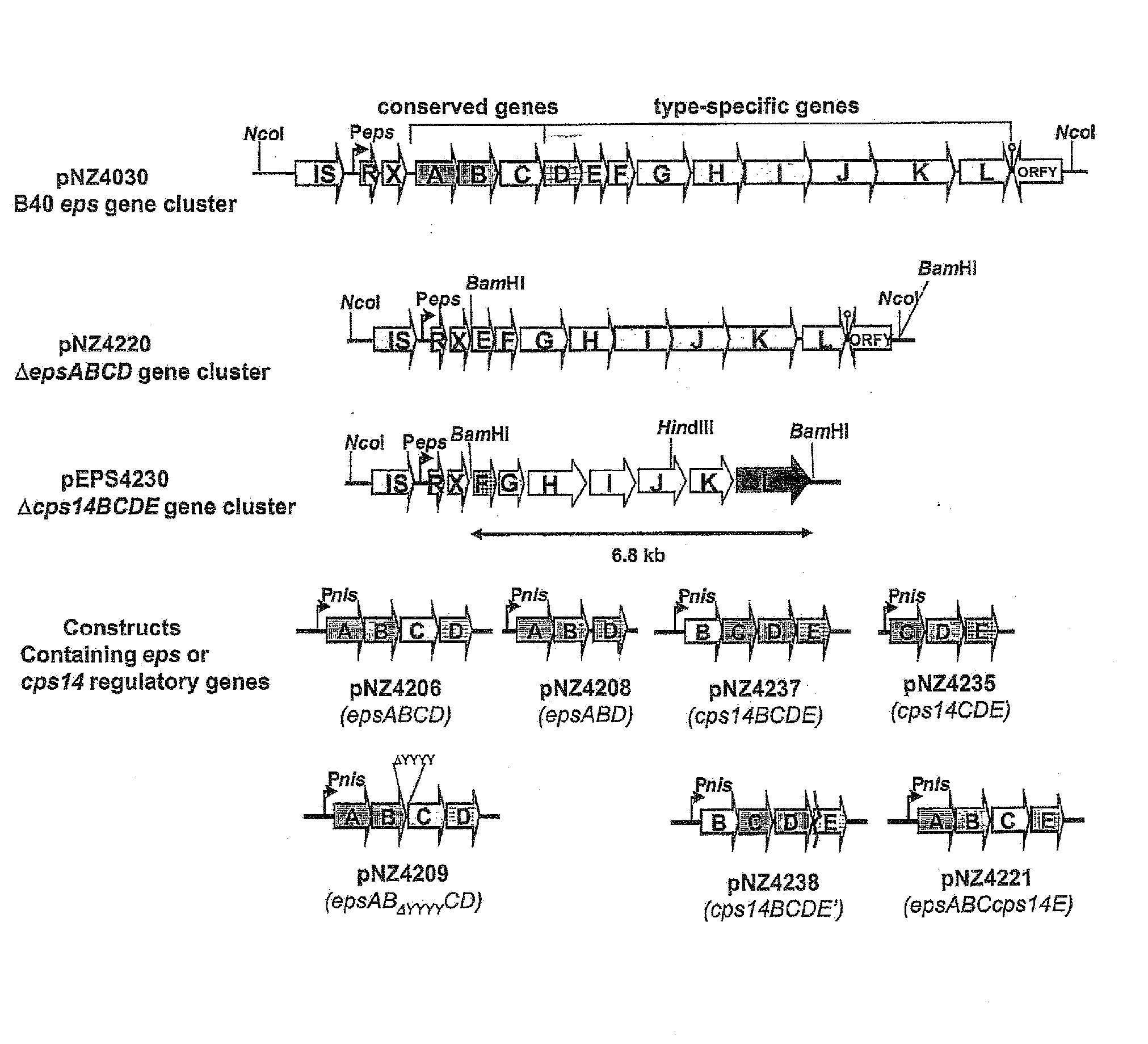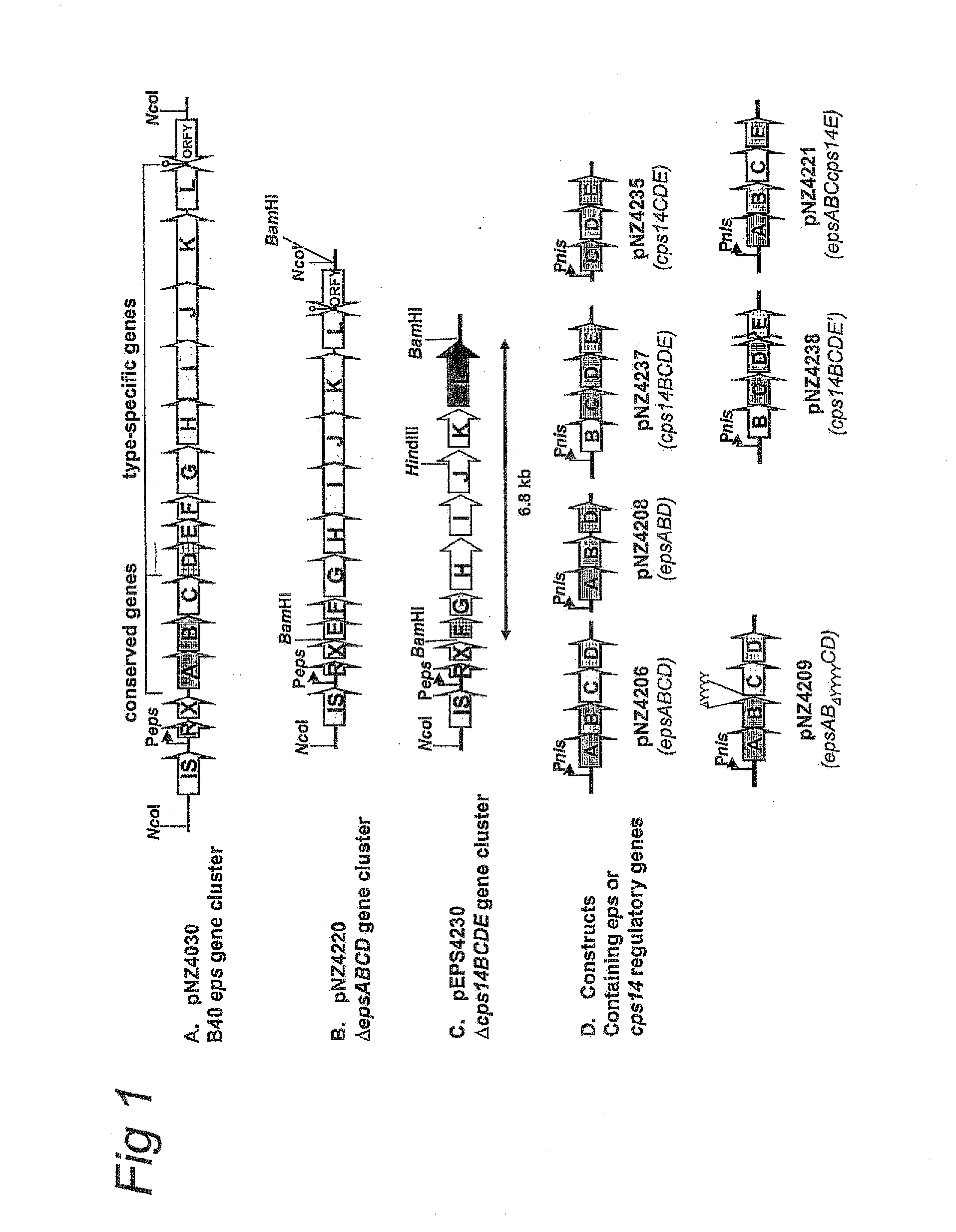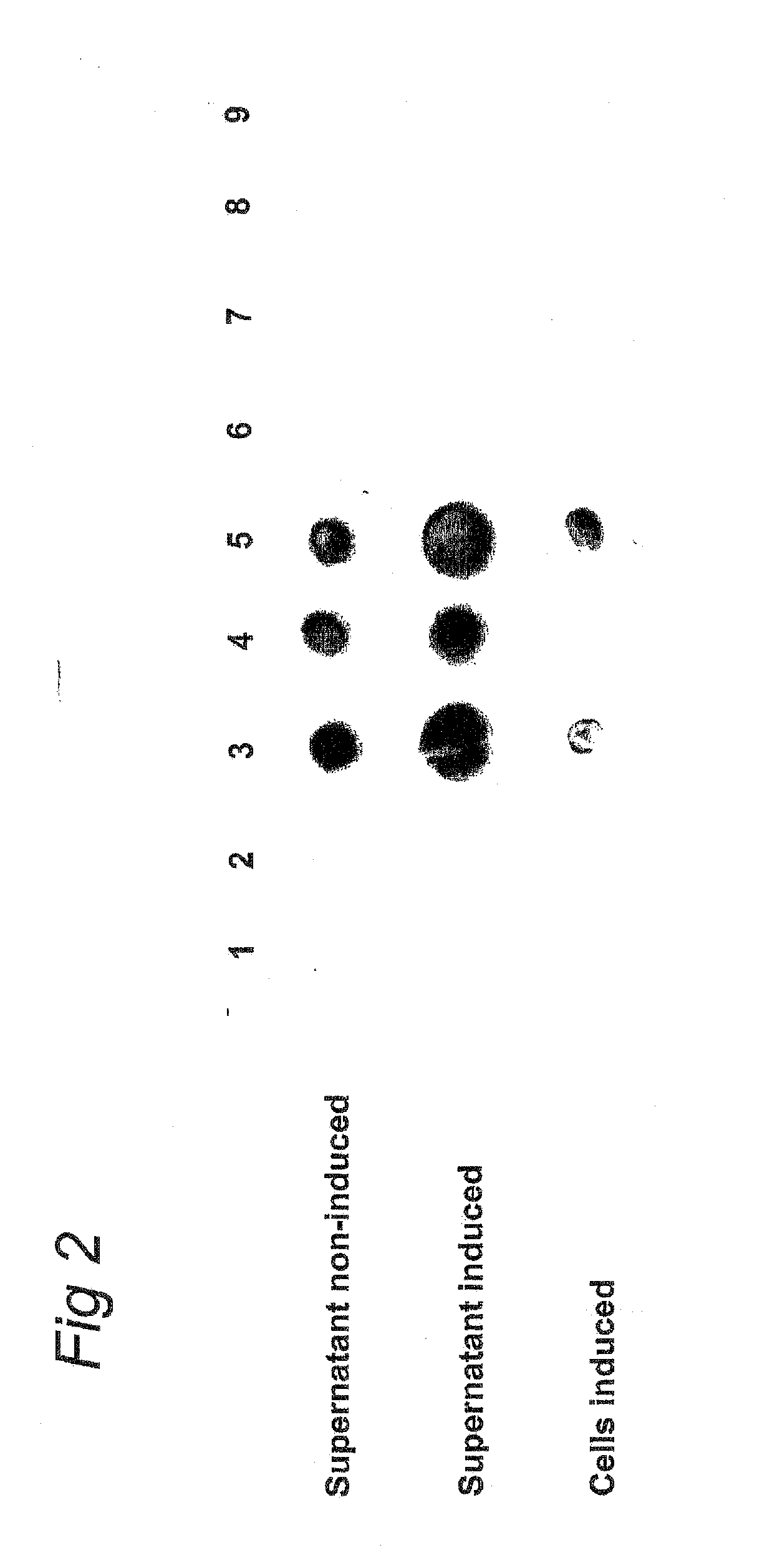Novel Efficient Production Process for Capsular Polysaccharides of Pathogenic Grampositive Bacteria by Heterologous Expression and Secretion of Complex Polysaccharides in Non-Pathogenic, Non-Invasive Gram-Positive Bacteria
a production process and gram-positive bacteria technology, applied in the field of microbiology, can solve the problems of complex and expensive treatment of pneumococcal infections, capsular polysaccharides not reliably promoting protective and long-lasting immune protection in young children, and achieve the effect of convenient isolation and easy isolation
- Summary
- Abstract
- Description
- Claims
- Application Information
AI Technical Summary
Benefits of technology
Problems solved by technology
Method used
Image
Examples
example 1
Streptococcus pneumoniae Serotype 14 CPS Synthesis and Secretion in L. lactis
Materials and Methods
Bacterial Strains and Growth Conditions
[0059]All bacterial strains and plasmids used in this study are listed in Table 1. L. lactis was grown at 30° C. without aeration in M17 broth (Merck, Darmstadt, Germany), supplemented with 0.5% (wt / vol) glucose or in chemically defined medium (Looijesteijn and Hugenholtz, 1999) supplemented with 2% (wt / vol) glucose. Escherichia coli, which was used as cloning host, was grown with aeration in Trypton-Yeast (TY) broth (Sambrook et al., 1989) at 37° C. Where appropriate, media were supplemented with erythromycin (5 μg / ml), chloramphenicol (5 μg / ml), or tetracycline (2.5 μg / ml).
TABLE 1Strains and plasmids usedStrain or plasmidRelevant propertiesReferenceStrainsNZ9000MG1363 pepN::nisRKKuipers et al., 1998E. coli E10PlasmidspNZ4130TetR, pNZ4000 derivative harbouring B40 epsBoels et al., 2001gene clusterpNZ84CmR, pACYC184 derivative, cloning vector forV...
PUM
| Property | Measurement | Unit |
|---|---|---|
| Fraction | aaaaa | aaaaa |
| Fraction | aaaaa | aaaaa |
| Force | aaaaa | aaaaa |
Abstract
Description
Claims
Application Information
 Login to View More
Login to View More - R&D
- Intellectual Property
- Life Sciences
- Materials
- Tech Scout
- Unparalleled Data Quality
- Higher Quality Content
- 60% Fewer Hallucinations
Browse by: Latest US Patents, China's latest patents, Technical Efficacy Thesaurus, Application Domain, Technology Topic, Popular Technical Reports.
© 2025 PatSnap. All rights reserved.Legal|Privacy policy|Modern Slavery Act Transparency Statement|Sitemap|About US| Contact US: help@patsnap.com



